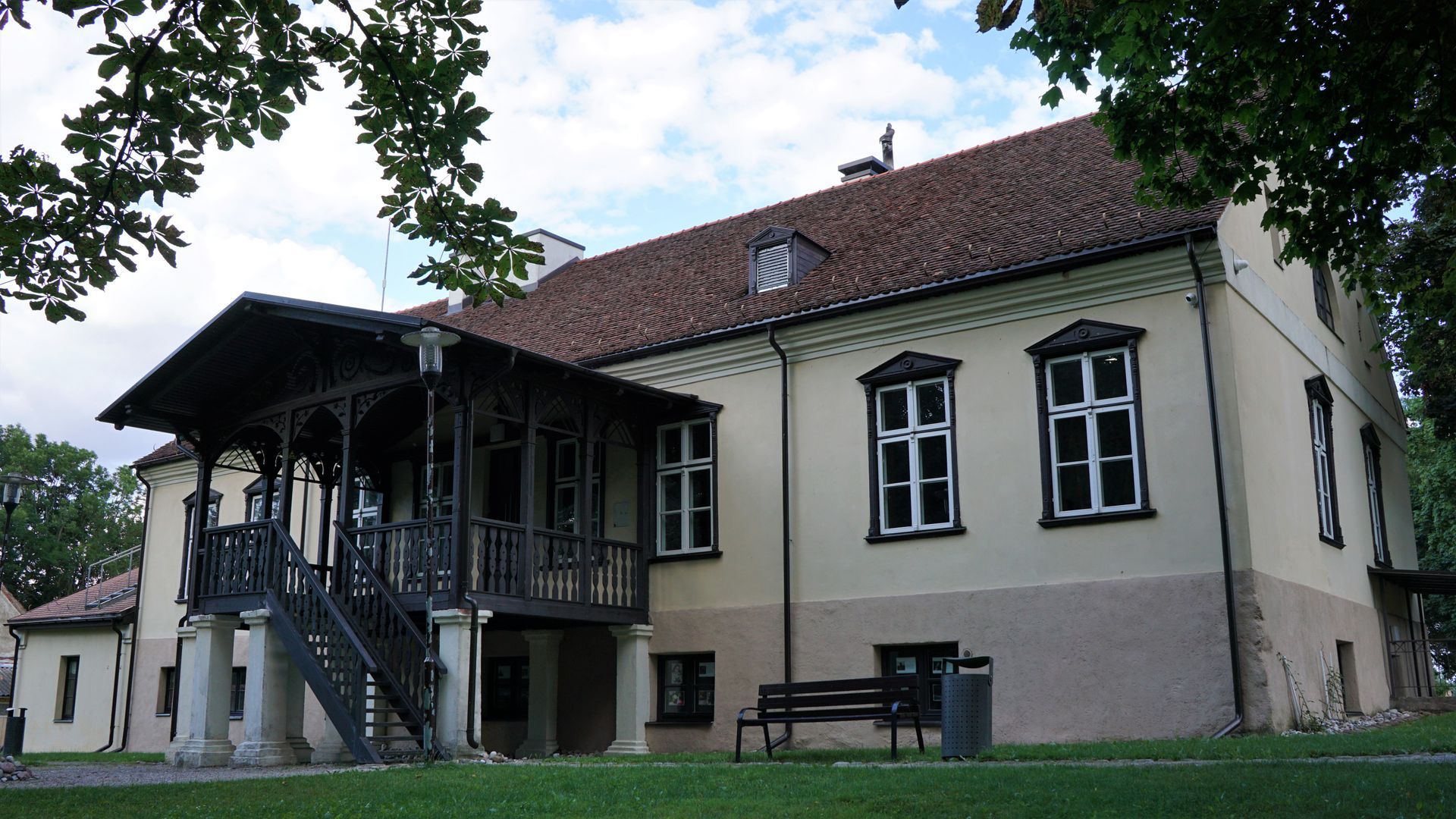
10 people was here
0 reviews
Kiduliai Manor, decorated with wooden carvings and a splendid belvedere, reminds of the secrets of the great rulers and the glorious moments. Although armies used to march in the streets of Kiduliai, the Manor used to accommodate the kings, Samogitian bishops, noble and brave barons who ruled the vicinities.
Kiduliai Manor was the only shelter of tranquility for the Prussian King Friedrich Wilhelm III. He was awaiting the possibility to sign the Tilžė Peace Treaty with the French Emperor Napoleon. The peacefully swinging ships on water used to soothe the monarch, and long walks across the alleys of deciduous trees in the manor park used to disperse the dark thoughts. The mood of the king would elevate by seeing his beloved Queen Luizė arriving. In addition to this lady, he used to be visited by the Russian Tsar Alexander I, who would come via the luxurious road. However, having signed the peace treaty, the unrest would not cease. The then residents of Kiduliai village witnessed the Napoleon’s troops march to Russia, and later the Tsar Army attacking in the opposite direction.
When the wars ended, the Manor had a new caring and long-term host Lieutenant General Baron von Offenberg move into it. Then the Kiduliai Manor never compromised to the luxurious palace and was even called a castle! The park was put in order and had unseen exotic flowers blooming in it, which the baron liked to take after himself as he loved gardening.
Although the village of Kiduliai was still at the epicentre of wars, and the Manor was at the command of both warring parties, it was not affected. Apparently, the strength of the nobles who lived here remained in the walls. Even after the First World War, the masonry walls belonging to all of the 27 the buildings belonging to the Manor remained untouched.
It has become commonplace that today in this Manor people learn and teach others to slow down the pace of life by means of cheerful activities and educational programs that bring people together. Up till now, the homestead of Kiduliai Manor has been emanating fabulous aromas and echoing a lively bustling. During festivals the guests can try the served baked snails, taste the wines of this region, and join the dances. While everyone is having a great time, someone is looking for the Napoleon’s treasure hidden under the three-trunk oak. We wonder whether someone finds it this year.
© Nemuno kelias
Loading...
Loading...
RELATED ROUTES
©2025 trip.lt


